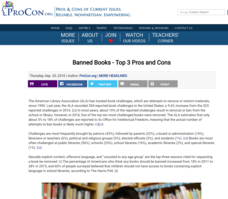NASA
Exploring Data
Bring the sun to your class! Young scholars analyze actual solar wind data in the second lesson of a five-part series. Their analysis includes speed, temperature, and density data.
Teach Engineering
The Building Blocks of Matter
Everything can be reduced to atoms. The first installment of a six-part Mixtures and Solutions unit focuses on the building blocks of matter. Scholars review basic atomic structure, including protons, neutrons, and electrons, in...
US Institute of Peace
Defining Conflict
Before there can be peace, we have to understand conflict. Introduce the concept of conflict through a two-part activity that combines discussion, collaboration, and writing. The first in a 15-part series examines the multiple meanings...
California Department of Education
Writing Right
Does your class have the write stuff? Young career seekers try their hand at composing business letters in the second of six career and college readiness lesson plans for seniors. Pupils practice writing cover letters, thank you notes,...
California Department of Education
The Next 6 Years
Six years seems like a long time when you're in seventh grade! But, graduation is closer than they think! The sixth and final college and career readiness lesson plan gets scholars focused on the courses they need to take throughout the...
CCSS Math Activities
Smarter Balanced Sample Items: 8th Grade Math – Target B
Develop a radical approach to covering the Smarter Balanced targets for 8th grade math with a presentation that helps further develop math skills. Seven sample items demonstrate the expectation for working with integer exponents,...
Curated OER
Banned Books
Should people be able to ban books from schools and libraries if they find them objectionable? Scholars read the three main pros and cons regarding banned books. They also review a list of the top 10 challenged books from 2017 and...
ProCon
Prescription Drug Ads
Bayer Pharmaceuticals sold heroin as a cough medicine in the 1900s ... who knew? Scholars discover this, and other interesting facts, when they use the resource to prepare for a class discussion or debate. They browse videos, readers'...
Stanford University
United Farm Workers
What do primary sources tell people about important events in history? The assessment geared toward high school social studies focuses on primary sources. Learners analyze a poster and a blueprint to determine how the documents show the...
Missouri Department of Elementary
Goldilocks Revisited
After a read-aloud of the story Goldielocks and the Three Bears, scholars gather into small groups to answer a series of questions. Peers examine the idea of smart decisions and identify three feelings of characters alongside three...
Missouri Department of Elementary
Putting on Armor
Middle schoolers learn how to protect themselves from risky behaviors with a lesson that has them role play several scenarios and demonstrate ways that they might do to stay safe. Class members then use what they have learned to build a...
Curated OER
How is Thermal Energy Transferred?
In this thermal energy worksheet, students will write down the key facts and vocabulary words associated with heat and thermal equilibrium, transfer of thermal energy, conductors and insulators, and heat capacity. This worksheet is a...
Curated OER
How Can Resources Be Conserved?
In this resources worksheet, students will list problems associated with using natural resources. Then students will come up with possible solutions for conserving those resources. This worksheet is a graphic organizer.
Curated OER
Give Me Your Vital Statistics
Students get to know each other and while giving them an opportunity to practice their logical thinking skills.
Curated OER
Who's for Dinner?
Fifth graders examine life systems within different biomes. They choose paper plates with the names of animals on them. They research the animals, write reports and draw pictures of them. They create a food chain model by arranging the...
Curated OER
Life's Big Questions: Where Did Life Come From?
Students explore the life forms that live in the hot springs of Yellowstone. They examine how microscopic creatures can survive in these extreme conditions. Students perform experiments to observe growth samples and demonstrate how a...
Curated OER
Ecology
Fourth graders research an ecosystem and its endangered species. They create a PowerPoint Presentation, oral report, poster or a booklet based on their research. They research on the internet and in biology texts in teams of 4.
Curated OER
Fred the Fish -- A River Ran Wild
Students apply cause and effect relationships to water pollution in a stream. In this pollution lesson students recognize the importance of clean water in their daily lives. Students accompany "Fred the Fish" as he travels down stream....
Curated OER
The Game of Life
Students explore the game of life which refers to what happens to a species when most of the population is gone. In this endangered species activity, students describe what it means for a marine animal to be endangered. Students then...
Curated OER
Microbe Experimentation
Sixth graders conduct a microbe experiment. In this microbe lesson plan, 6th graders develop an experiment with micro-organisms, complete the associated worksheet, and complete a table showing the results.
Curated OER
Organs to Go...
Young scholars explain the principles of experimental design and reinforce the steps of the scientific method. Each group of students create a "slush" type mixture to store a chicken liver.
Curated OER
Organization of Nations Project
Students research the priorities and needs of an assigned country. They come together and debate current events from the point of view of the country they are representing.
Curated OER
Inside Information
Students research and write reports about inventions and inventors. They develop graphic organizers to organize their information, and create reports on the impact of inventors and inventions.
Curated OER
Who Is Eating Whom?
Students discuss the food chain and identify if various organisms are producers or consumers. They draw ten types of organisms and construct a food web of these organisms, labelling each as a producer or consumer.

























